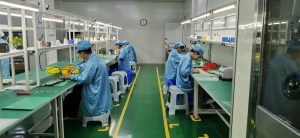You’ve come to the correct site if you’ve ever wondered how we extend the life and improve the performance of fuel cells. In the field of renewable energy, proton exchange membrane (PEM) cells are revolutionary. To be sure they’re up to par, though, they must undergo extensive testing, just like everything else. This is the point at which photochemical etching becomes relevant. So what exactly is photochemical etching, and why is it crucial for testing PEM cells? PEM cells are all about efficiently and emission-free converting chemical energy into electrical energy. In applications like as electric cars and portable power systems, these cells are very important. They work by using a thin membrane that lets protons pass through but keeps electrons out, allowing electricity to flow .
Importance of Testing in PEM Cells
Testing PEM cells isn’t just about ensuring they wo rk; it’s about making sure they work efficiently and for a long time. Rigorous testing helps identify weaknesses in materials and design, ensuring reliability in real-world applications. And here’s where photochemical etching makes all the difference.
rk; it’s about making sure they work efficiently and for a long time. Rigorous testing helps identify weaknesses in materials and design, ensuring reliability in real-world applications. And here’s where photochemical etching makes all the difference.
Unlike traditional machining or stamping, which can introduce mechanical stress and limit design complexity, photochemical etching is a non-contact process . This means there is minimal distortion or stress on the metal plates, preserving the integrity and functionality of the bipolar plates. Additionally, Photochemical etching can be more cost-efficient and scalable, particularly for high-volume production runs where precision and repeatability are key.
The Role of Photochemical Etching in PEM Cell Testing
Enhancing Precision in PEM Cells
PEM cells require precision beyond everything else. Even the smallest flaw can have an impact on performance and result in inefficiency. By guaranteeing that every part satisfies precise requirements, photochemical etching lowers the possibility of performance variations amongst cells. For PEM cells to function consistently and dependably in real-world circumstances, this is essential.
Improving Durability and Longevity
Durability is another critical factor in PEM cell performance. Over time, materials can degrade, leading to failures. Photochemical etching helps enhance the durability of PEM cell components in several ways.
Reduction of Micro-Cracks
The strength of the material can be compromised by microcracks, which are microscopic fractures that can be introduced by conventional production techniques. On the other hand, photochemical etching results in smooth surfaces and edges, greatly lowering the possibility of these microcracks. As a result, the components get stronger and have a lower chance of failing over time.
Resistance to Chemical Degradation
The chemicals used in PEM cells can be quite harsh, leading to material degradation over time. Components made through photochemical etching tend to have better resistance to these chemicals, which means they last longer and maintain their performance for a more extended period.
Benefits of Photochemical Etching in PEM Cell Manufacturing
Achieving Complex Geometries
One of the standout benefits of photochemical etching is its ability to create complex geometries that would be challenging or impossible with traditional machining. This flexibility allows for innovative designs that can enhance PEM cell performance.
Minimizing Material Waste
Photochemical etching is a subtractive process, but it’s incredibly efficient. Unlike mechanical methods that carve away large amounts of material, photochemical etching only removes what’s necessary, minimizing waste. This not only saves on material costs but is also better for the environment.
Cost Efficiency in High-Volume Production
While the initial setup for photochemical etching can be more expensive due to the need for photomasks and chemical solutions, the process becomes highly cost-effective in high-volume production. The ability to produce hundreds or thousands of identical, high-precision components quickly makes it an economical choice for PEM cell manufacturing.
Challenges in PEM cell testing by photochemical etching
Material Compatibility and Surface Contamination
Photochemical etching requires specific chemicals that may not be compatible with all materials used in PEM cells, leading to potential corrosion or degradation. Additionally, residues from these chemicals can contaminate surfaces, affecting cell performance and requiring rigorous cleaning procedures.
Process Control and Consistency
Maintaining consistent etching results is challenging due to the need for precise control over chemical concentrations, exposure times, and environmental conditions. Inconsistencies in the process can lead to variations in component quality and affect the overall performance and reliability of PEM cells.
Cost and Scalability
While photochemical etching is cost-effective for high-volume production, the initial setup costs can be high, making it less suitable for low-volume or prototype testing. Additionally, scaling up the process for mass production involves managing more complex operations and higher quantities of chemicals, increasing the difficulty and cost.
TMN Etching Industry carefully chooses appropriate materials and chemicals to avoid corrosion and degradation in order to handle the issues of photochemical etching in PEM cell testing. We employ cutting-edge cleaning techniques to prevent surface contamination and uphold stringent process controls to guarantee constant quality. Efficient cost management and production optimization, TMN is able to produce etched components for PEM cells that are of high quality, dependable, and scalable.
Before beginning full-scale manufacturing, Tmn provides a number of samples to let clients confirm the product’s quality and requirements, ensuring the finished product lives up to all expectations.
Please feel free to contact us with any queries at +8613603056883 by phone, WeChat, or WhatsApp.. You can also send us an email at lydia.sales1@tmnetch.com.
FOR MORE INFO:
https://tmnetch.com/category/metal-photochemical-etching/
What is the Impact of Photochemical Etching on Precision Manufacturing?

